Ghosts of tech past: Photos of data storage from the 1950s – 1980s
Image 1 of 29
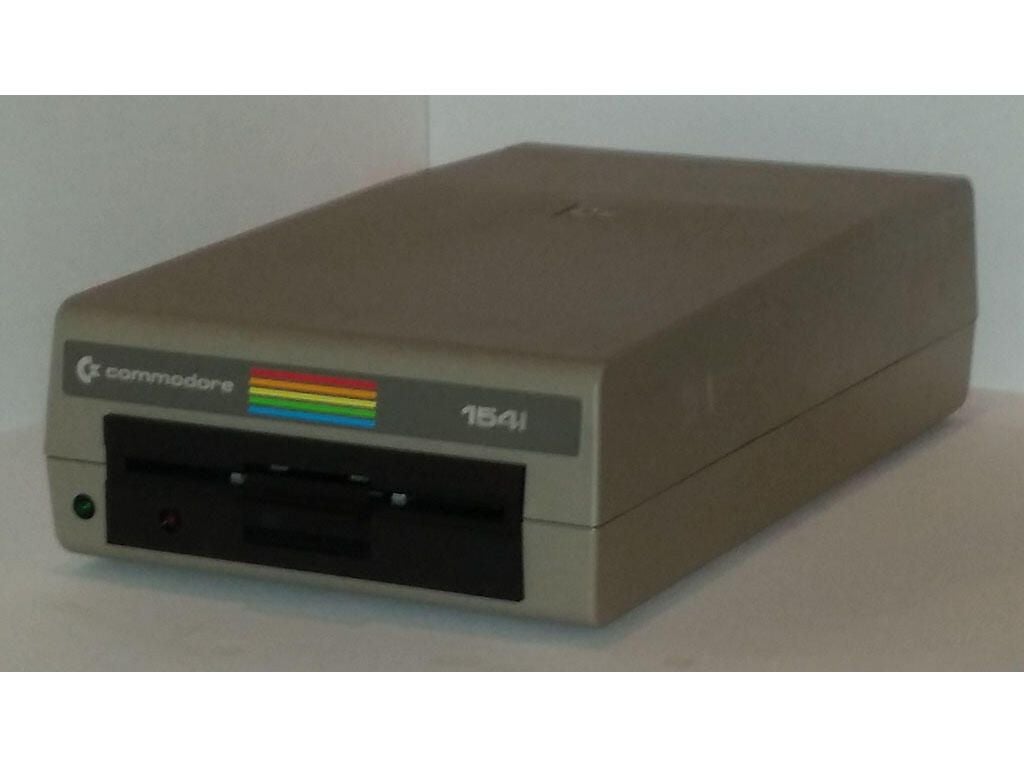

Commodore 1541
Commodore 1541
Today we think of data storage in terms of memory cards, solid-state drives, traditional hard disks, and high-speed tape libraries. Take a trip back in time to see storage examples of the 1950s through 1980s, as displayed at the InfoAge Science Center located in Wall, New Jersey.
The Commodore 1541 may be the most famous 5.25-inch floppy disk drive of the 1980s. If you had a Commodore 64 microcomputer, then you had a 1541 and memorized the command LOAD “*”, 8, 1.


Cassette drive in Commodore PET 2001
Cassette drive in Commodore PET 2001
The PET 2001 was Commodore’s first in-house microcomputer, circa 1977 (they bought the earlier KIM-1 from MOS Technologies). There wasn’t a disk drive for the 2001, so Commodore designed a tape drive right into the case.
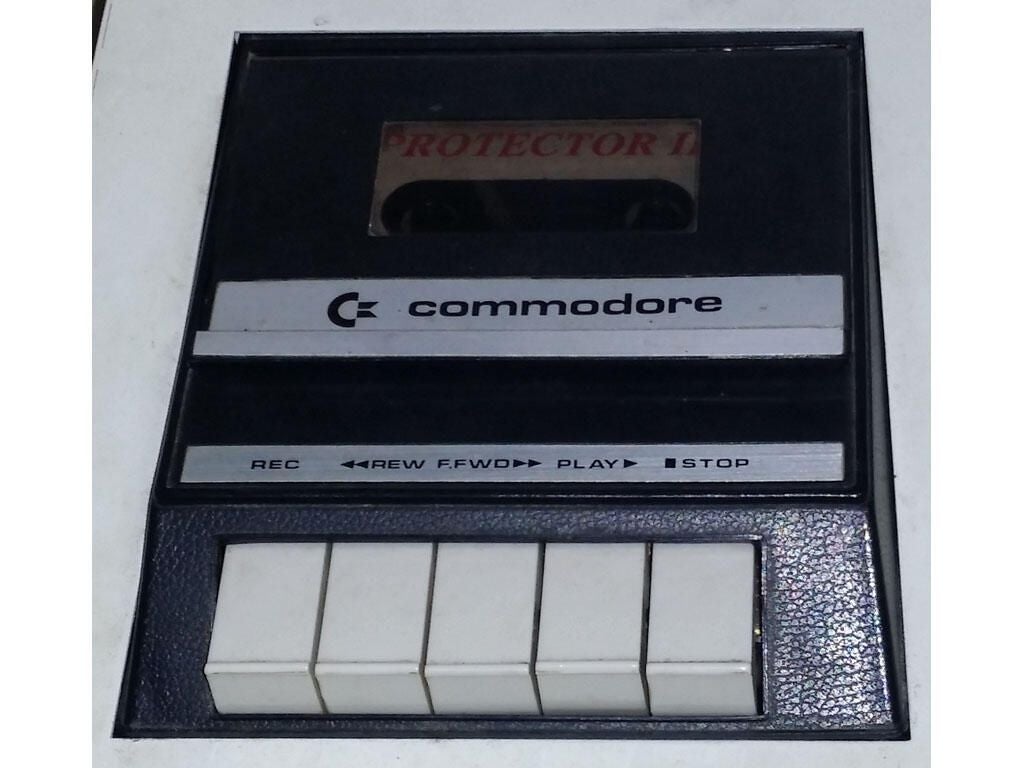

Cassette drive in Commodore PET 2001
Cassette drive in Commodore PET 2001
Here’s a close-up view of the drive.


Commodore 4040 drive unit
Commodore 4040 drive unit
Another popular drive from Commodore was the 4040 dual floppy system.
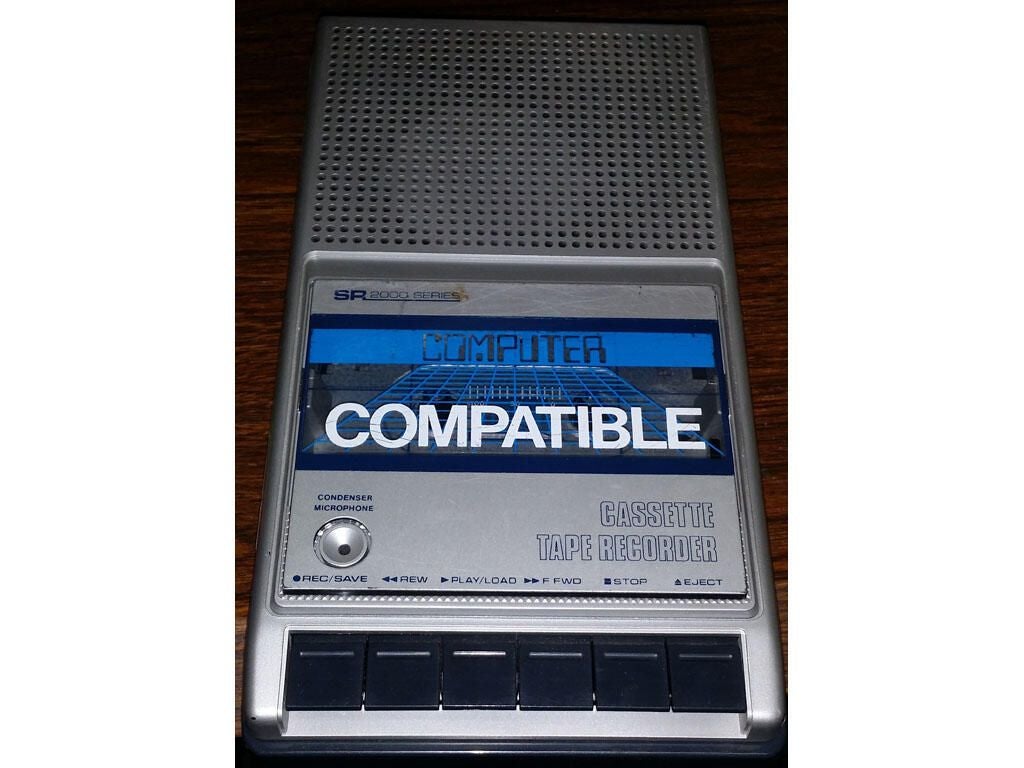

Cassette recorder/player
Cassette recorder/player
Regardless of which microcomputer you owned in the 1970s and 1980s, you may have loaded and saved data from a standalone generic cassette player.
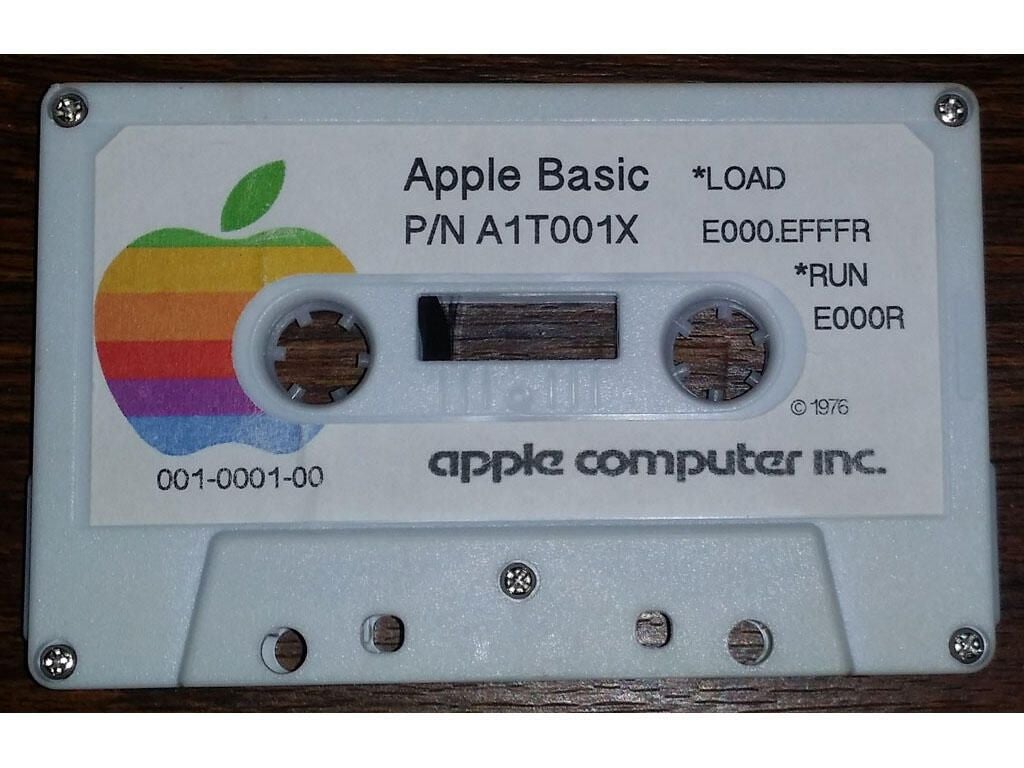

BASIC tape for the Apple 1
BASIC tape for the Apple 1
With the legendary Apple 1 microcomputer, designed by Steve Wozniak and sold in 1976-1977, you would boot in assembly in ROM. You could then load BASIC from a cassette — if you bought Apple’s optional interface.
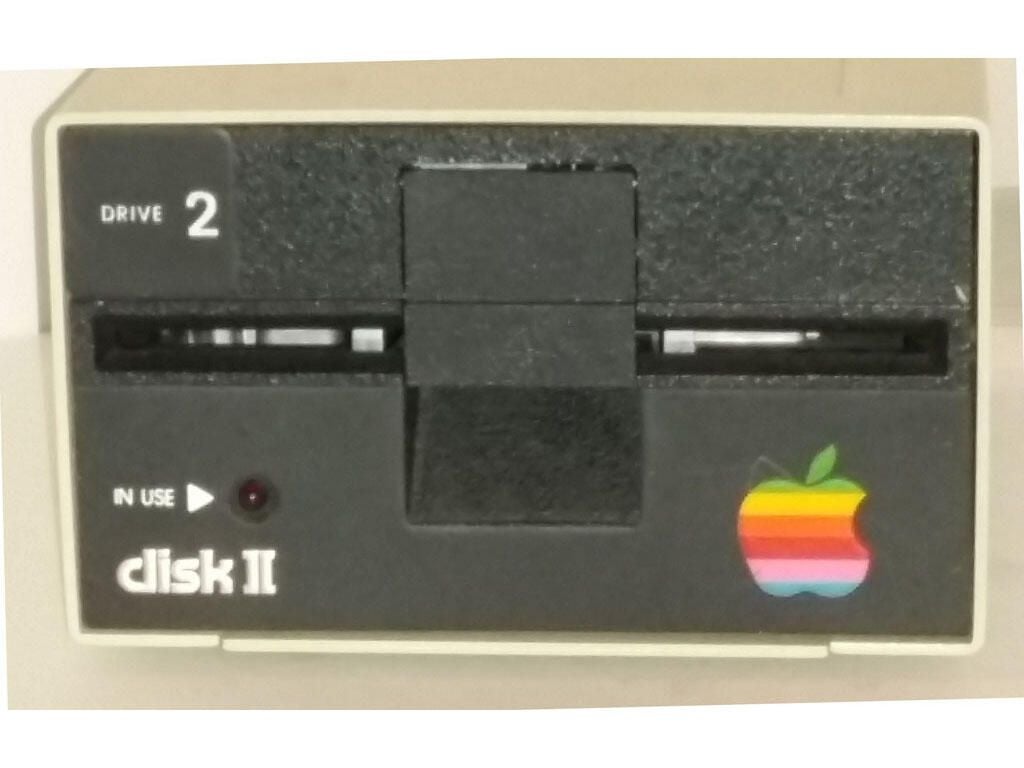

Disk II
Disk II
The popular Disk II unit did not ship until after the Apple II shipped in 1977. Here’s a close-up view of one such drive. Users typically affixed Apple’s rainbow logo sticker to the bottom right corner.
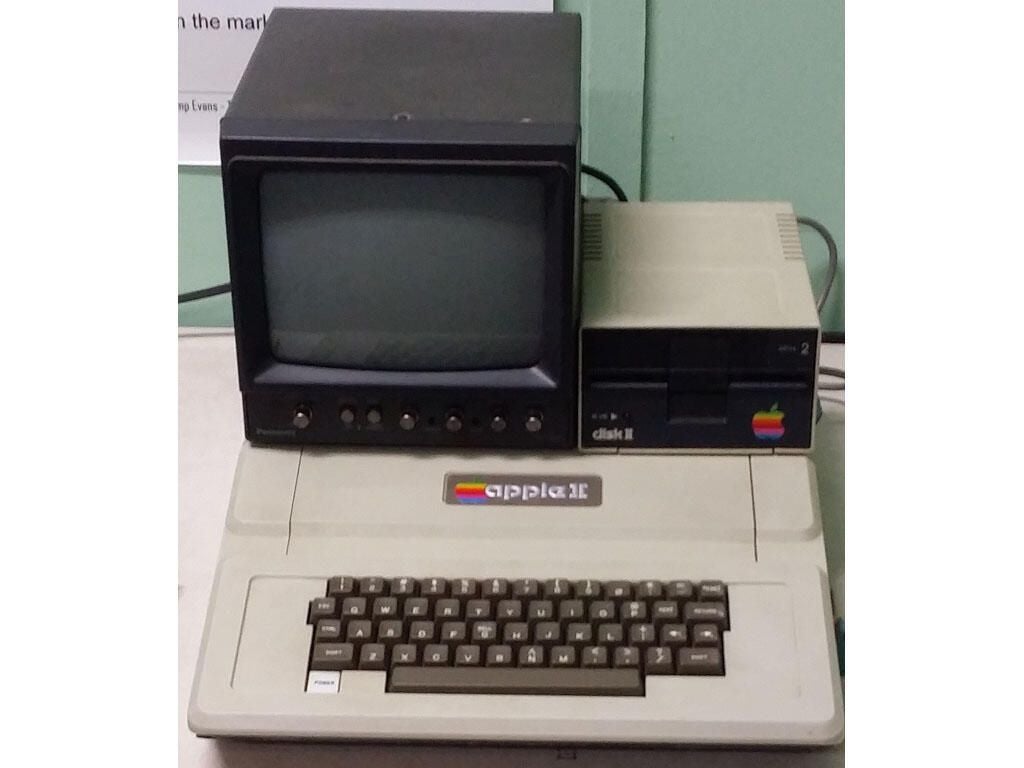

Apple II
Apple II
Here you can see a Disk II in its most common configuration — the computer’s top lid is perfectly sized to hold a small TV and the floppy drive. Later, when Apple introduced a proper monitor, users began stacking drives to the side of the computer or just sandwiched between the computer and monitor.
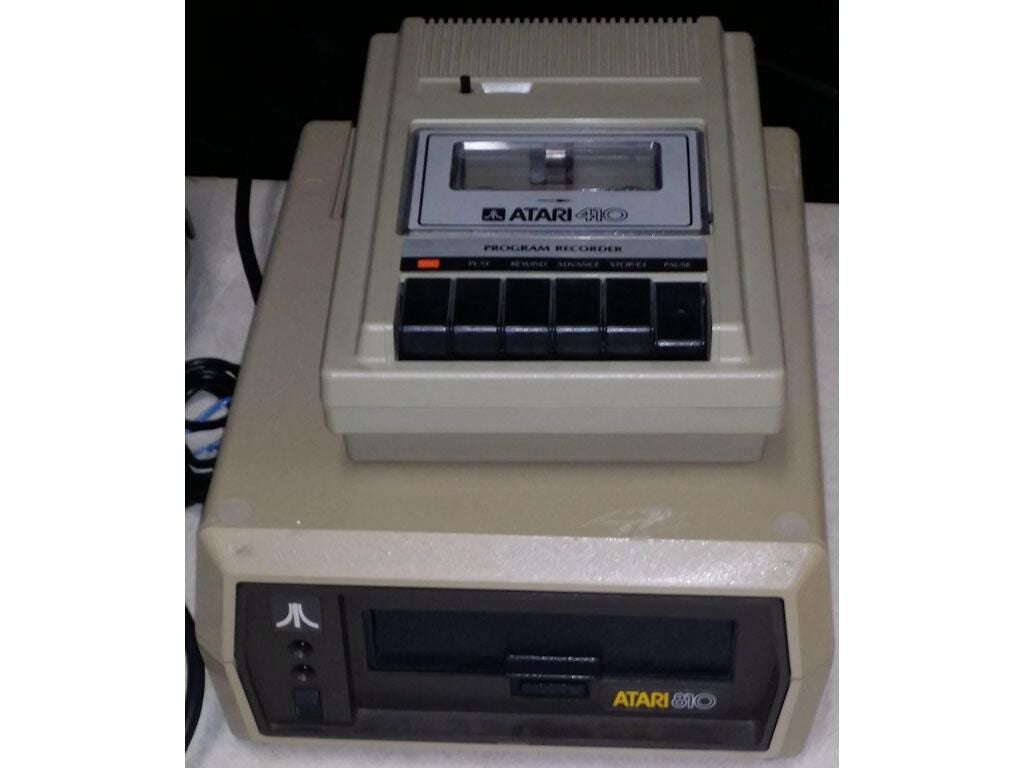

Atari tape drive and floppy drive
Atari tape drive and floppy drive
Atari is famous for its 2600 video game console, but they also made a series of microcomputers. The Atari 800 was one of their best sellers. Cassette and floppy drives were available.
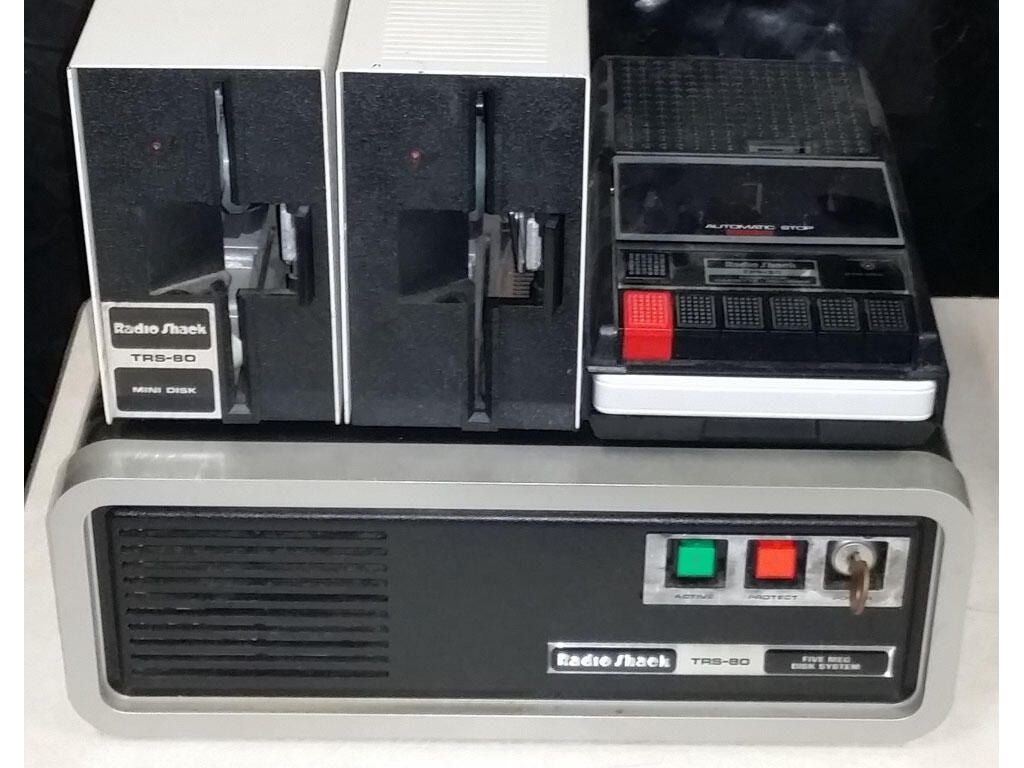

Tandy-Radio Shack drive assortment
Tandy-Radio Shack drive assortment
There were many storage options for the Tandy-Radio Shack TRS-80 computer series. This photo shows dual floppy disk drives, a tape drive, and the very rare 5-megabyte hard disk.
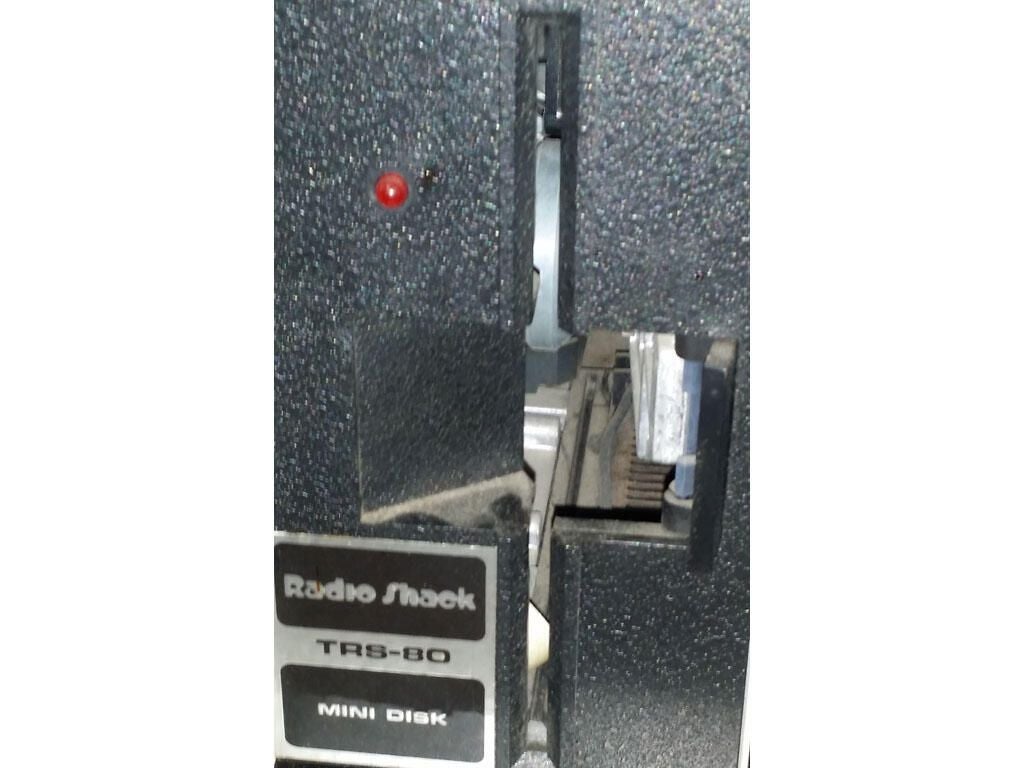

Tandy-Radio Shack floppy drive
Tandy-Radio Shack floppy drive
The floppy disk drive had a nice texture. Take a peek at the insides.
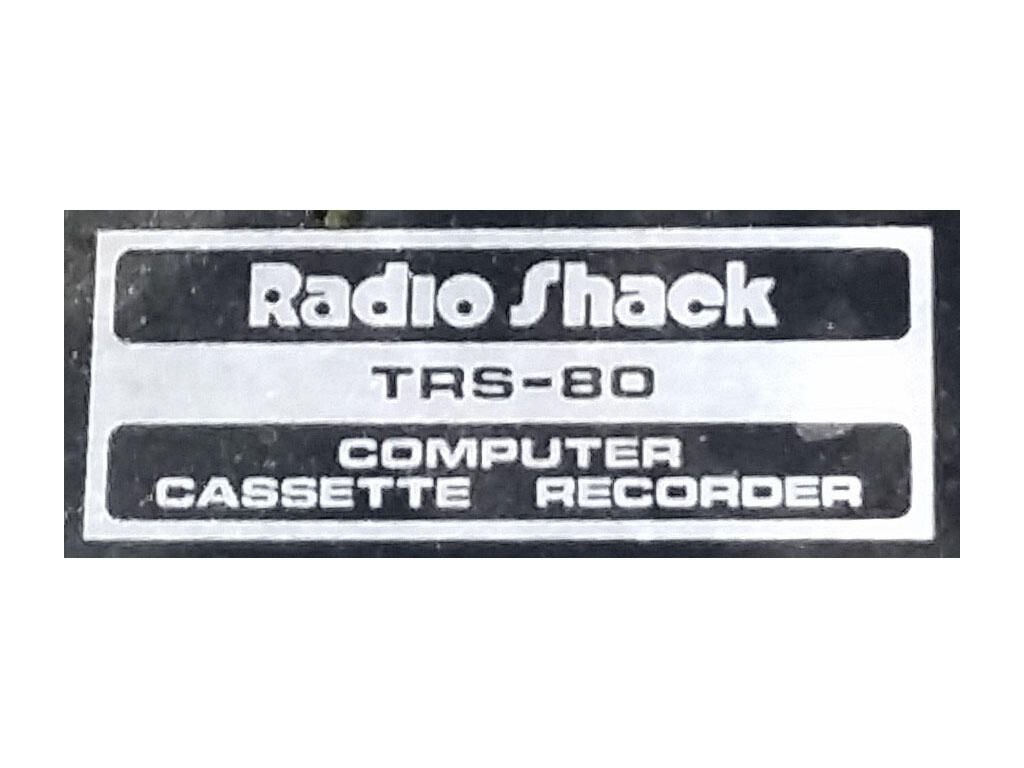

Tape drive label
Tape drive label
Sometimes a close-up photograph of the label says it all.
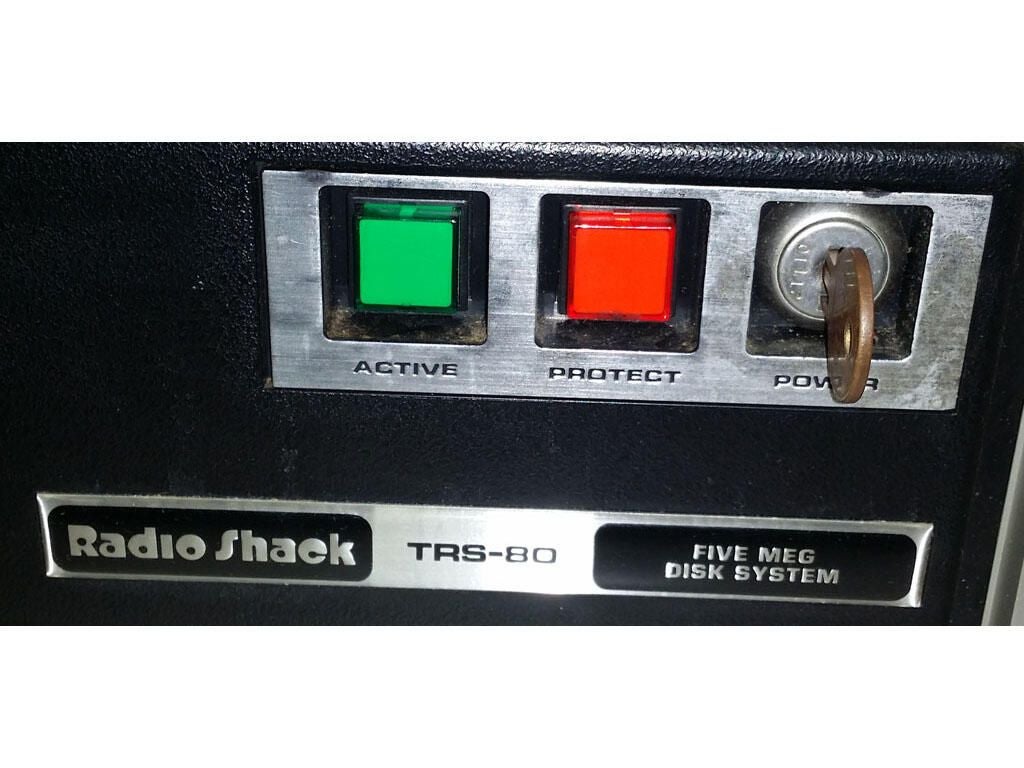

Tandy-Radio Shack hard disk controls
Tandy-Radio Shack hard disk controls
If you’re younger than 40, you probably never saw an external hard disk requiring a key.
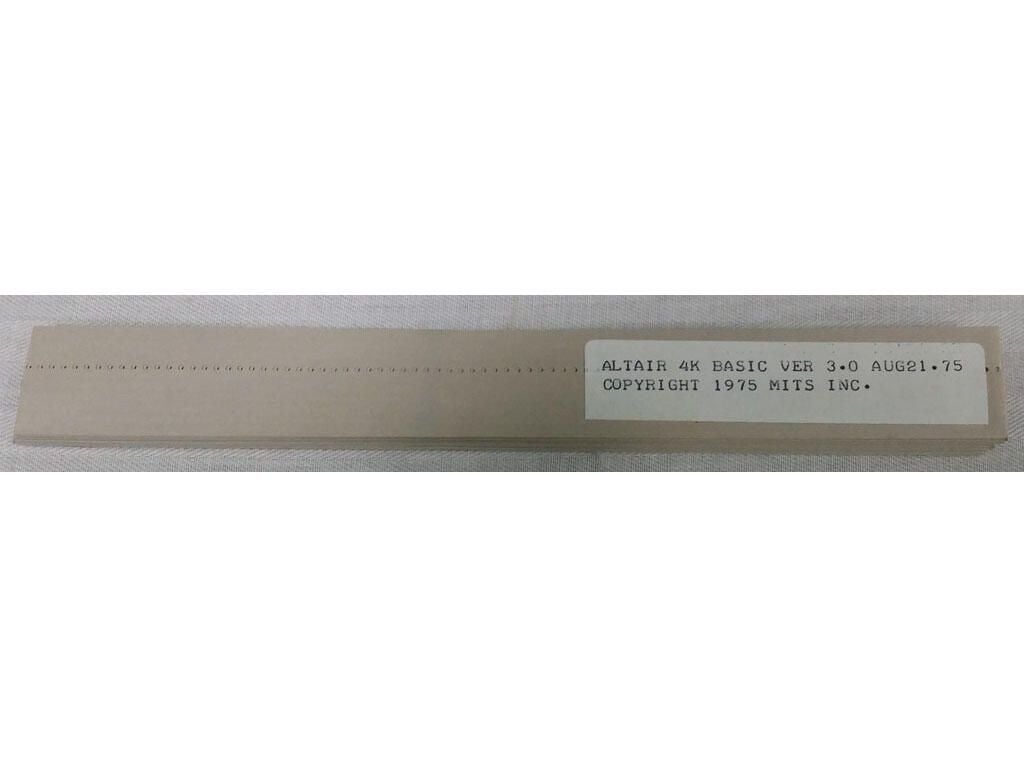

Microsoft BASIC paper tape
Microsoft BASIC paper tape
Dartmouth University professors wrote the BASIC programming language in the mid-1960s. A decade later, Harvard undergrads Paul Allen and Bill Gates ported it to the Altair 8800 microcomputer. They sold it on paper tape, so most people just copied it, leading to Gates’ infamous “Open letter to hobbyists.”
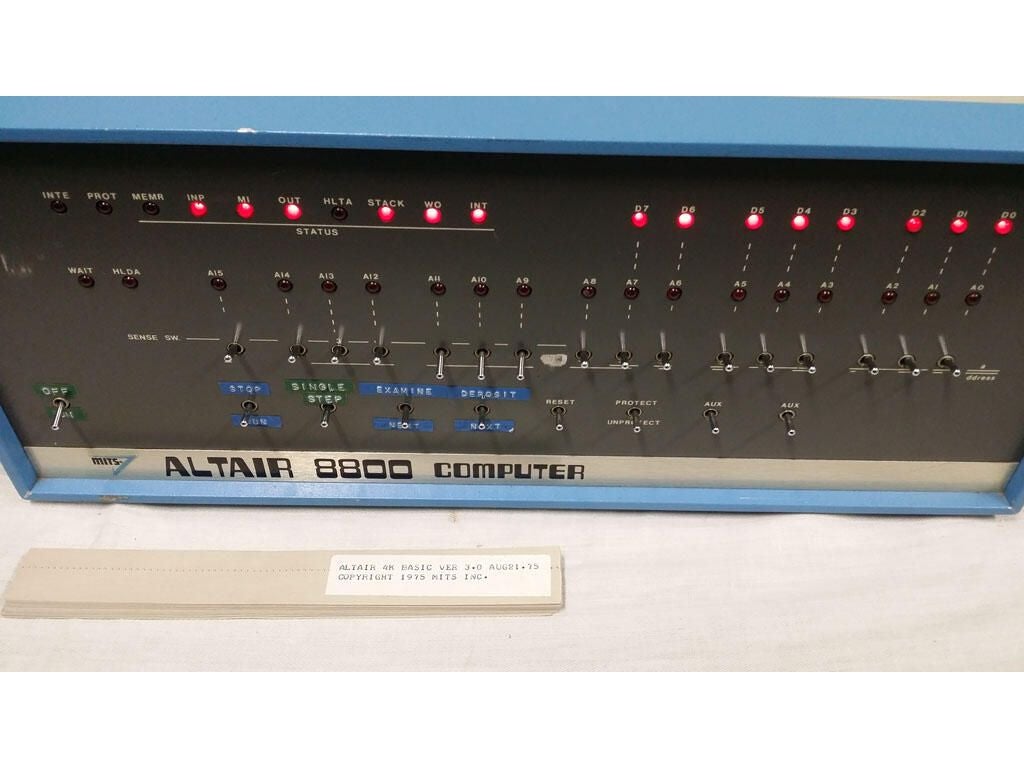

Microsoft BASIC with Altair
Microsoft BASIC with Altair
Here’s the same paper tape with an Altair 8800. The computer was the work of an electronics and hobby company in New Mexico called M.I.T.S. — Micro Instrumentation and Telemetry Systems. Contrary to popular lore, it wasn’t the “first” personal computer, just the most popular of its era.
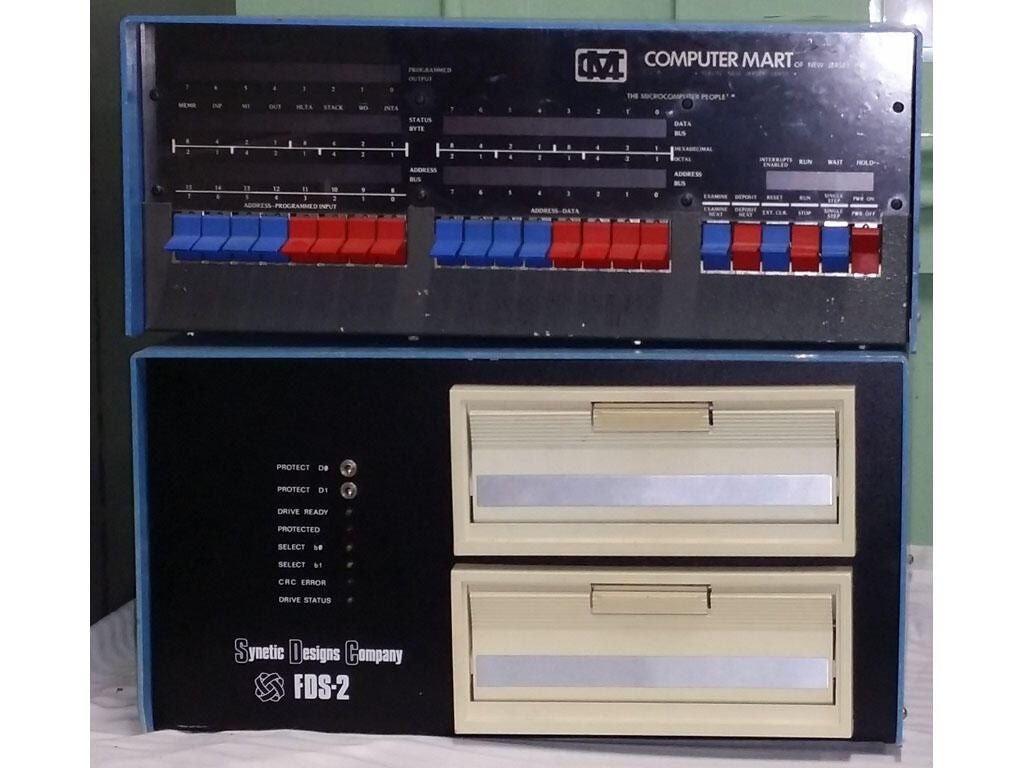

IMSAI 8080 and floppy drives
IMSAI 8080 and floppy drives
IMS Associates Inc. — IMSAI — made the IMSAI 8080 as a clone of the Altair. It became famous eight years later as the system Matthew Broderick’s David Lightman used in his bedroom to almost start World War III in the film WarGames. A rare accessory: third-party dual 8-inch floppy drives.
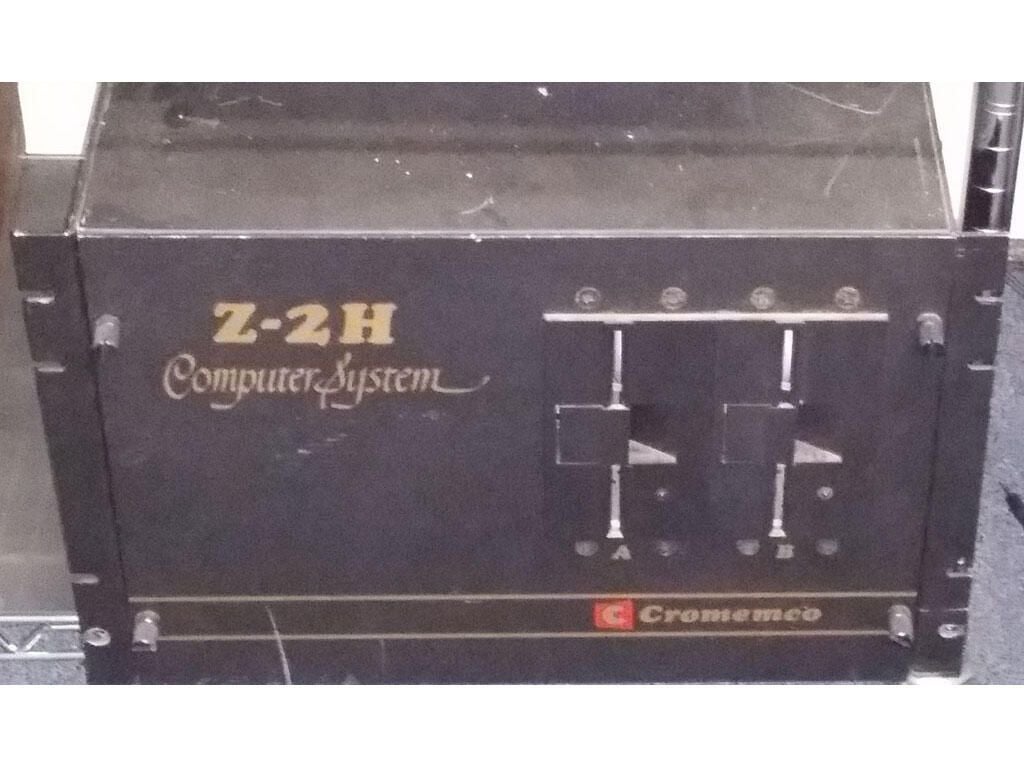

Cromemco 2-ZH with drives
Cromemco 2-ZH with drives
Cromemco, like M.I.T.S. and IMSAI, made microcomputers using the S-100 bus. You access this system entirely through a teletype or electronic terminal — that’s why there is no front panel, making the computer look like it’s nothing but a dual 8-inch floppy drive unit.


DEC Rainbow with a unique drive
DEC Rainbow with a unique drive
Digital Equipment Corp. (DEC) is known for its minicomputers of the 1960s and 1970s. “Mini” meant smaller than a mainframe. DEC also made the Rainbow microcomputer in the 1980s. Its 5.25-inch drive is unique. Rather than having two separate drives, it uses a single mechanism for the top and bottom disks.
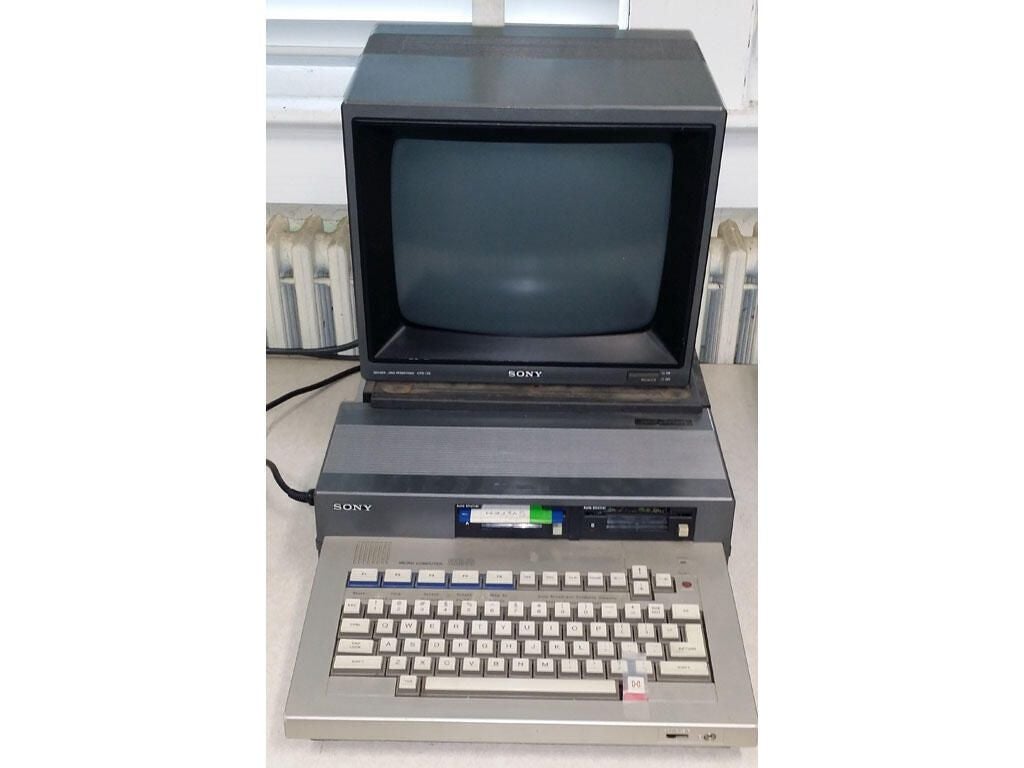

Sony SMC-70
Sony SMC-70
Sony invented the 3.5-inch floppy disk, and its computer was the first to ship with it.
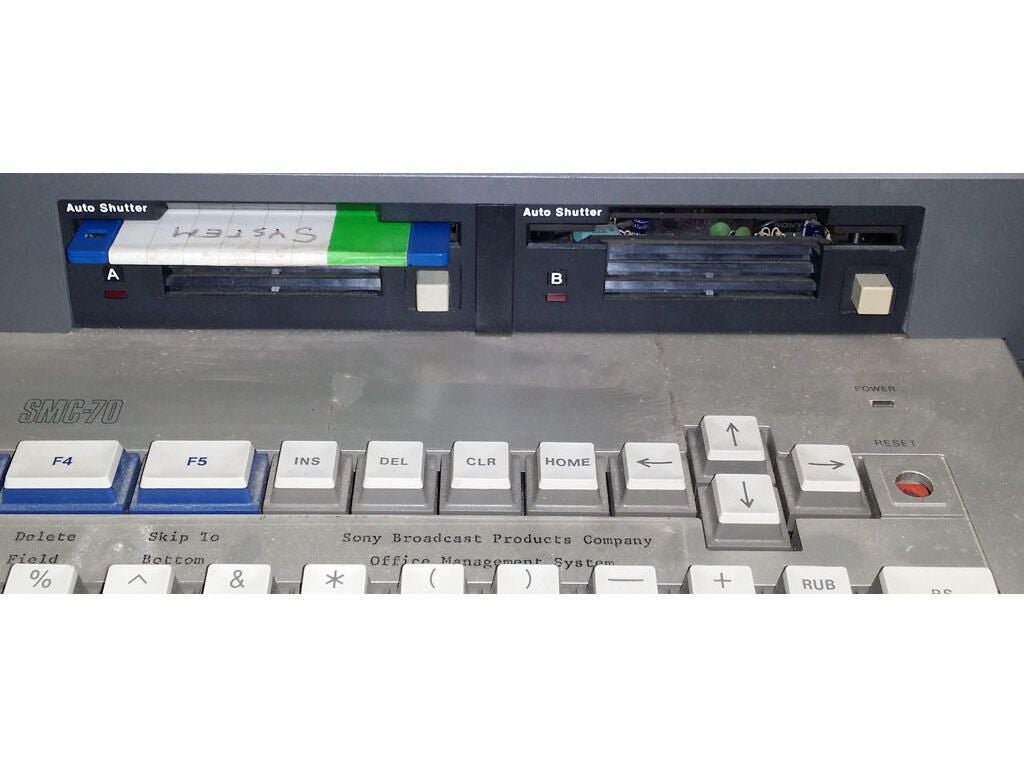

Sony SMC-70 close-up
Sony SMC-70 close-up
Take a detailed look at some of the earliest 3.5-inch floppy drives you could buy.
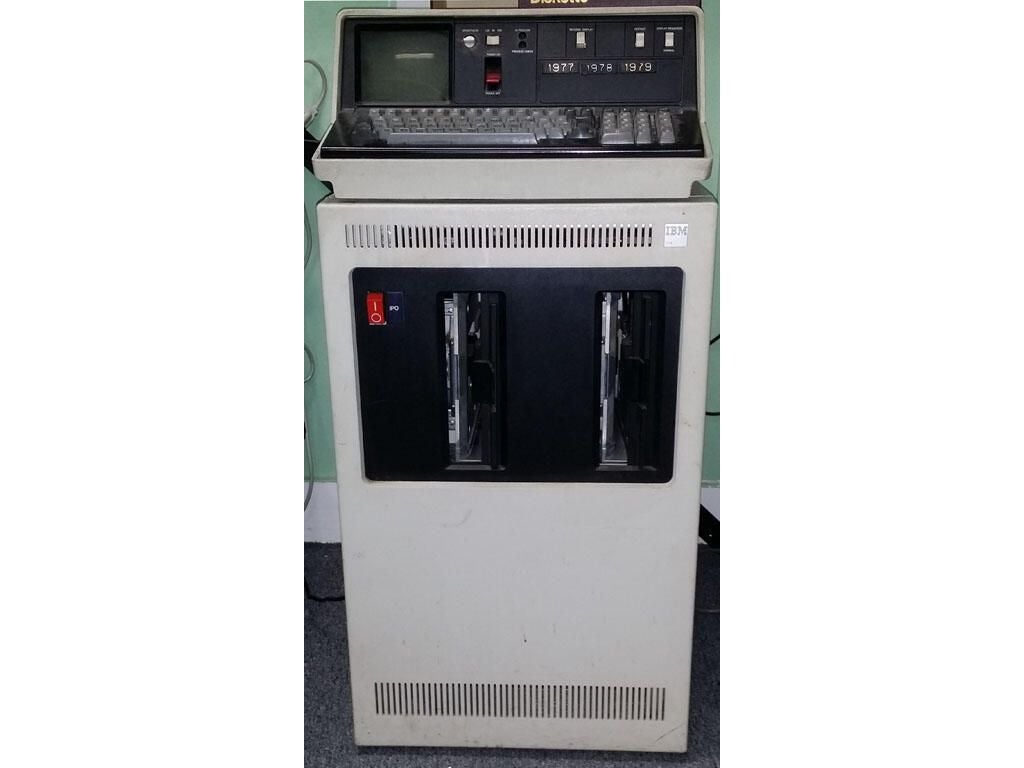

IBM 5110 and drives
IBM 5110 and drives
It wasn’t just Altair, Apple, and their ilk building microcomputers in the middle of the 1970s; large corporations such as HP and IBM built them too, but theirs were exponentially more expensive and were marketed to businesses. This is an IBM 5110 on top, which is dwarfed by its dual 8-inch floppy drive cabinet on bottom.
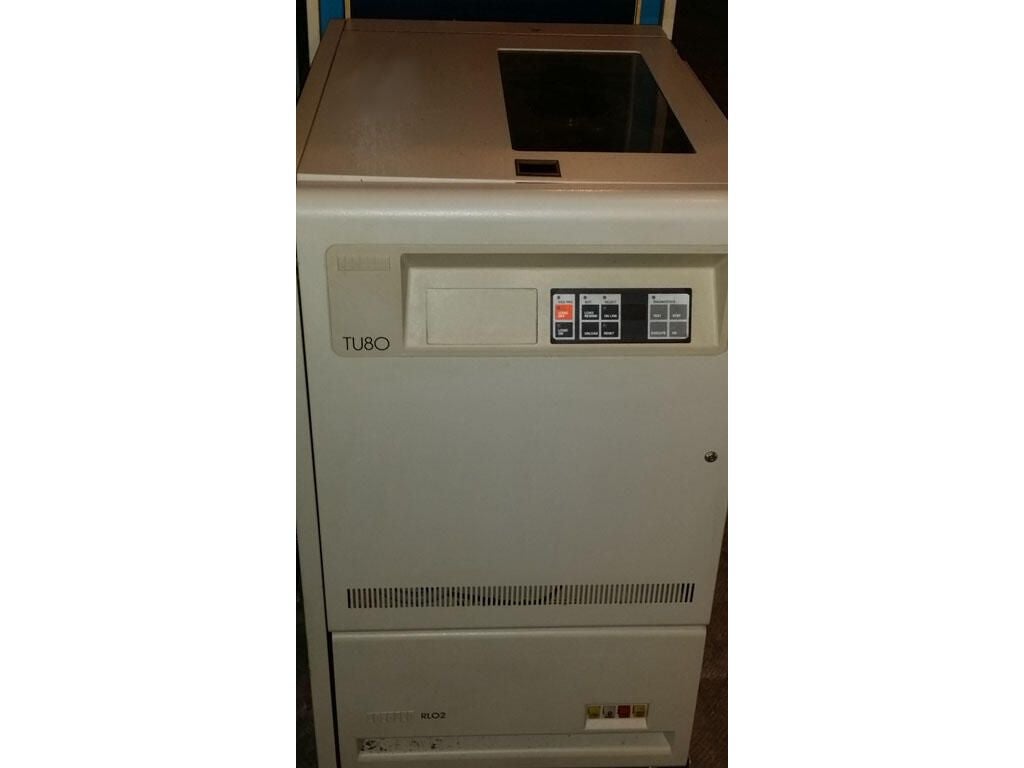

DEC TU80
DEC TU80
Ever hear of a washing machine drive? This unit and others like it were so named because of their shape, noise, and tendency to excessively vibrate. Another DEC unit is the RLO2 below it in the same rack. The RLO2 slides open from the front and you’d insert a disk pack, not unlike putting a CD or DVD into its tray. The differences are disk packs weigh about 10 pounds and are mechanical.
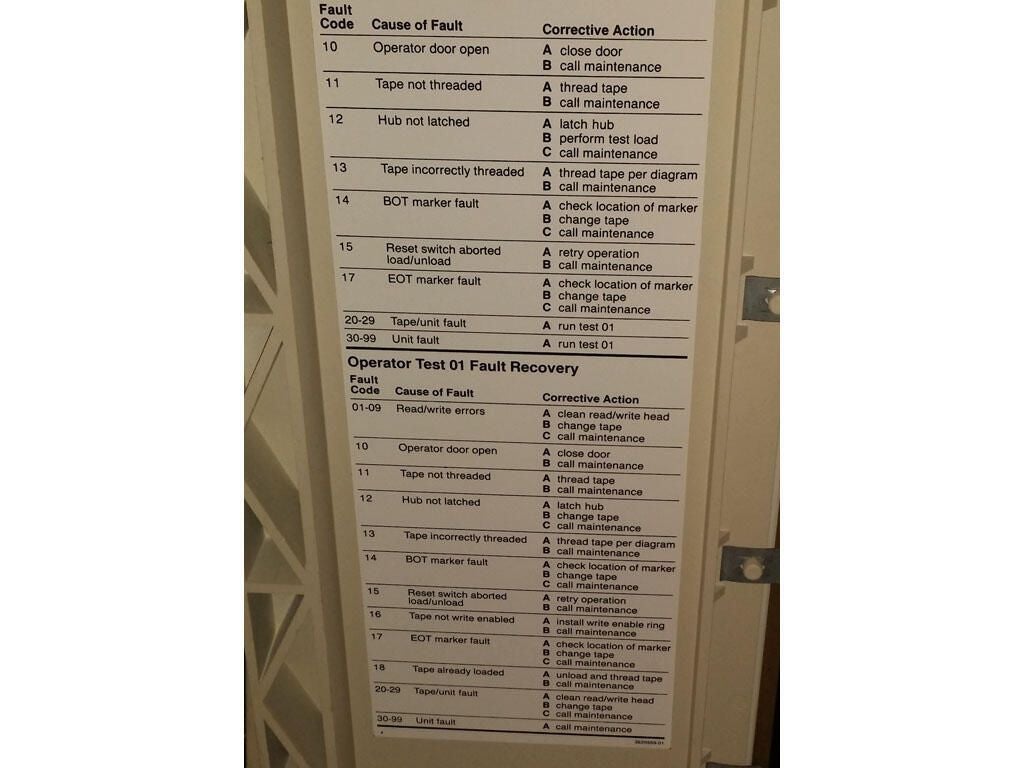

TU50 fault codes
TU50 fault codes
Something’s wrong with your DEC TU58 drive? Consult the handy fault codes listed under the top cover.
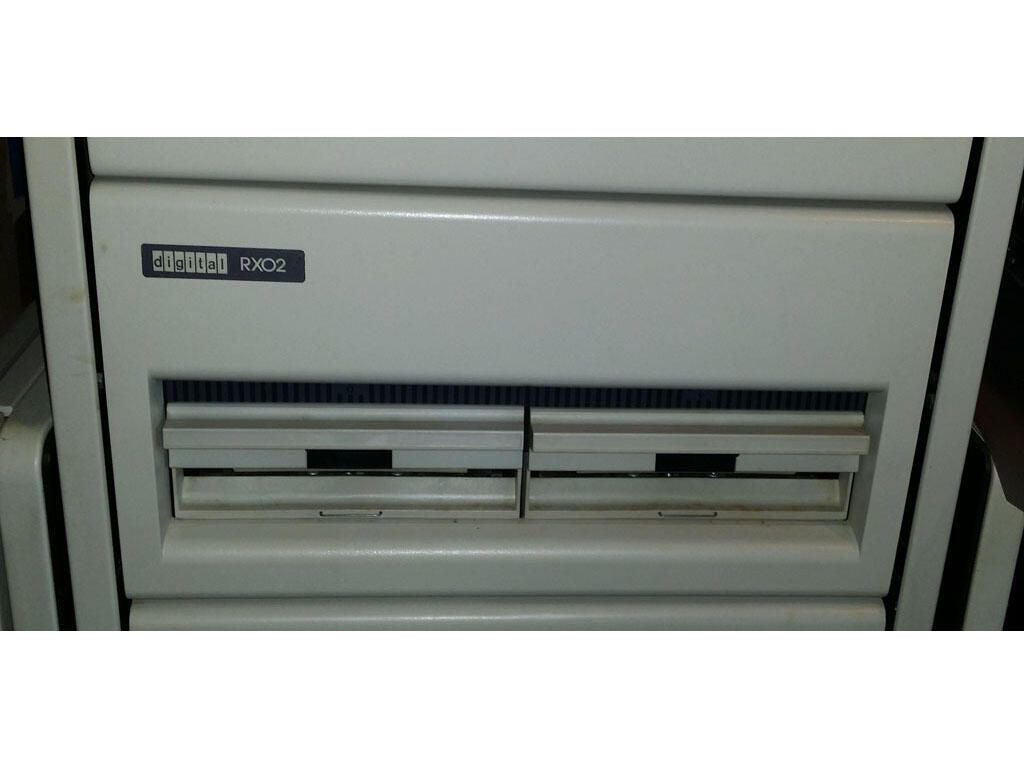

DEC dual 8-inch floppies
DEC dual 8-inch floppies
DEC had many drives available. This one is the model RXO2 dual 8-inch floppy unit.


IBM Model 29 keypunch
IBM Model 29 keypunch
Punch cards were the dominant mainframe storage method for many decades. The IBM model 29 keypunch machine is one of the stalwarts.
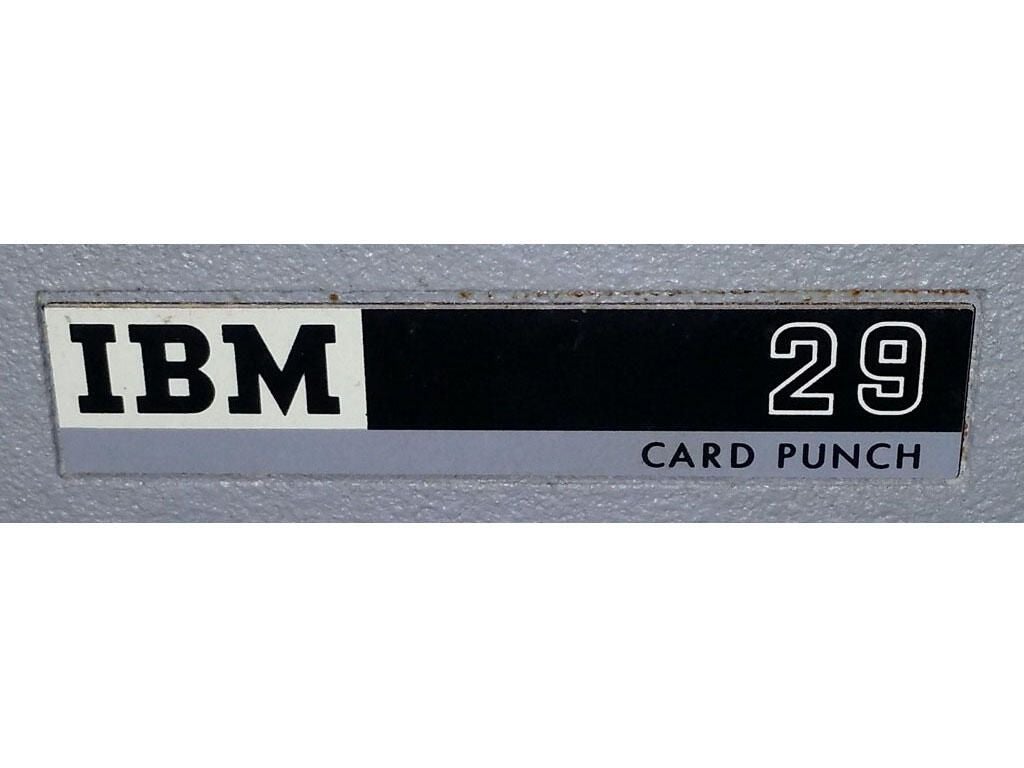

IBM Model 29 label
IBM Model 29 label
They just don’t make computer component labels like they used to!
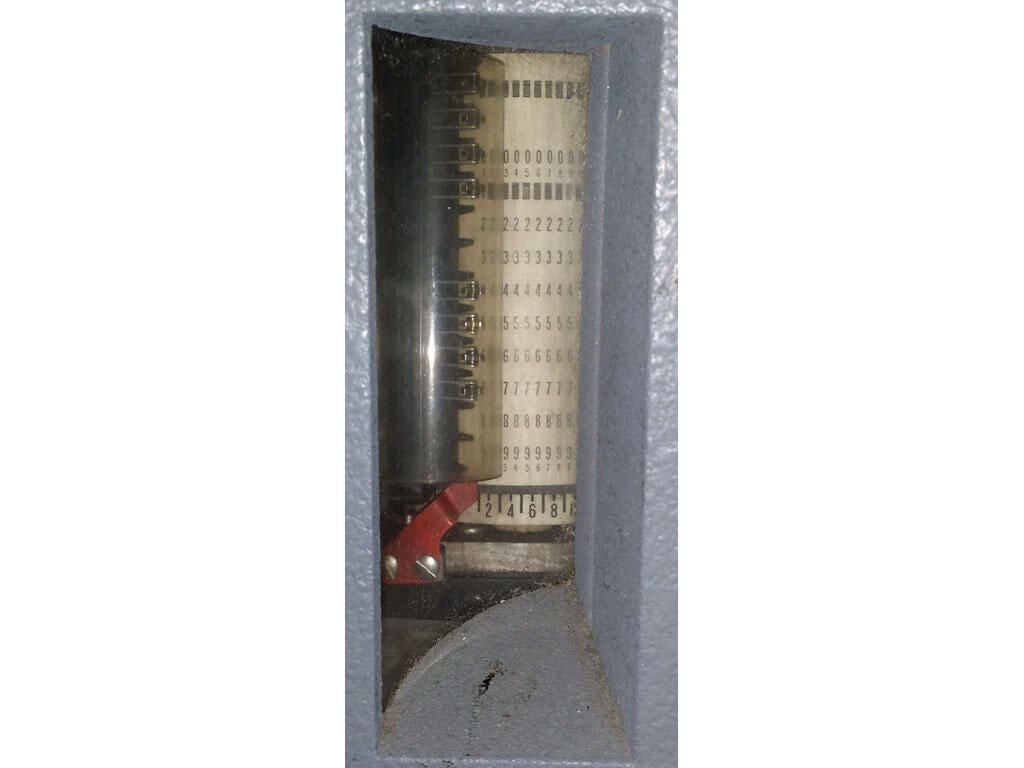

IBM Model 29 card
IBM Model 29 card
Wrapping a card in this position tells the machine to set up fields, allow shifting, and duplicate data from the previously punched card.
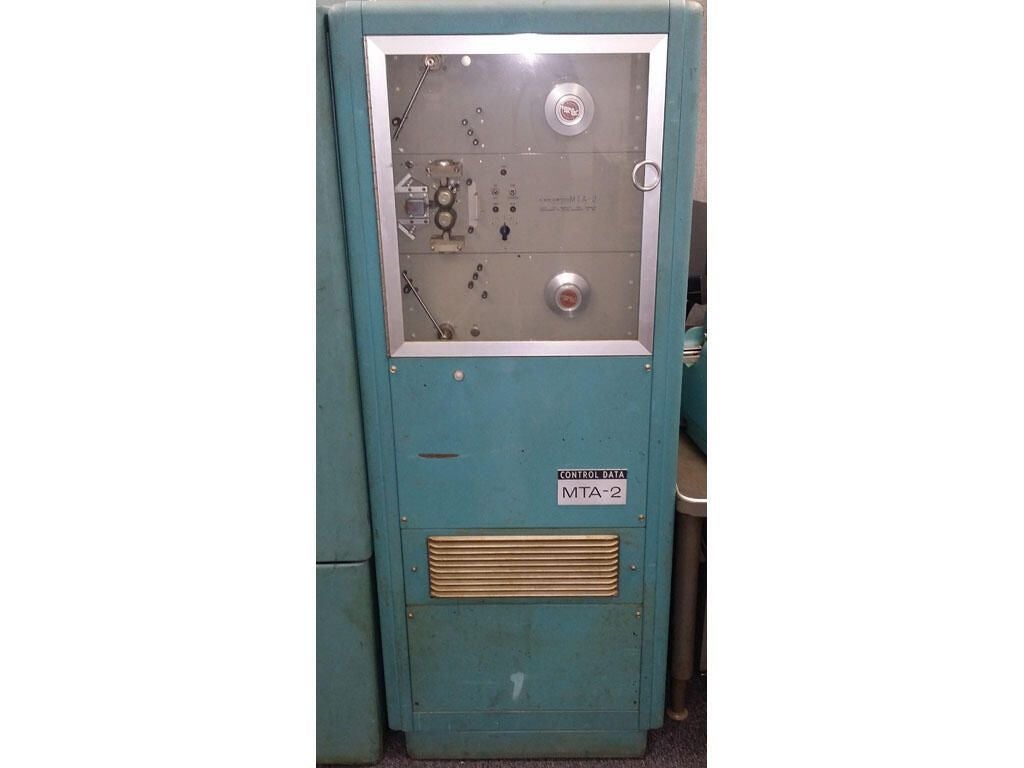

Bendix G-15 tape drive
Bendix G-15 tape drive
This tape drive attaches to a Bendix G-15 vacuum tube mainframe, circa 1956. The original user of this particular unit leased it for eight years, after which it went back to Bendix. Around that time Control Data Corp. (CDC) acquired Bendix. As such, CDC relabeled this unit and sent it to the next customer down the line.
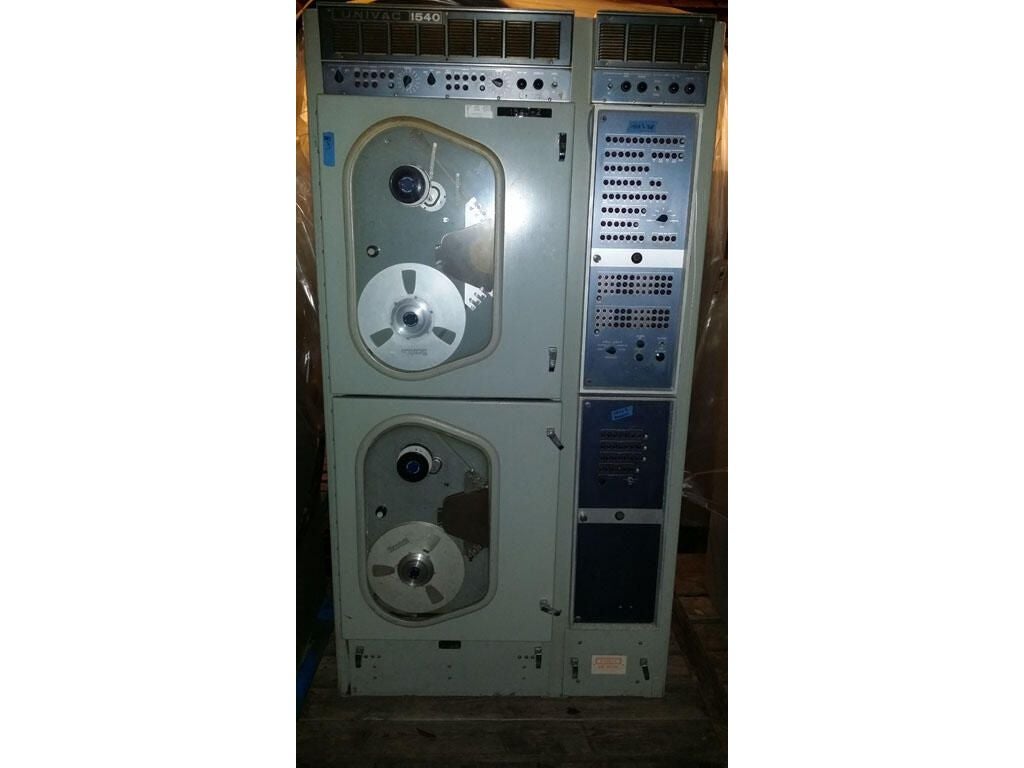

UNIVAC 1540
UNIVAC 1540
The UNIVAC 1540 unit, from the mid-1960s, weighs about 1,000 pounds and holds two seven-track, seven-megabyte tape drives. It connects to model 1219-B mainframe intended to reside on a U.S. Navy battleship.
-
Account Information
Contact Evan Koblentz
- |
- See all of Evan's content